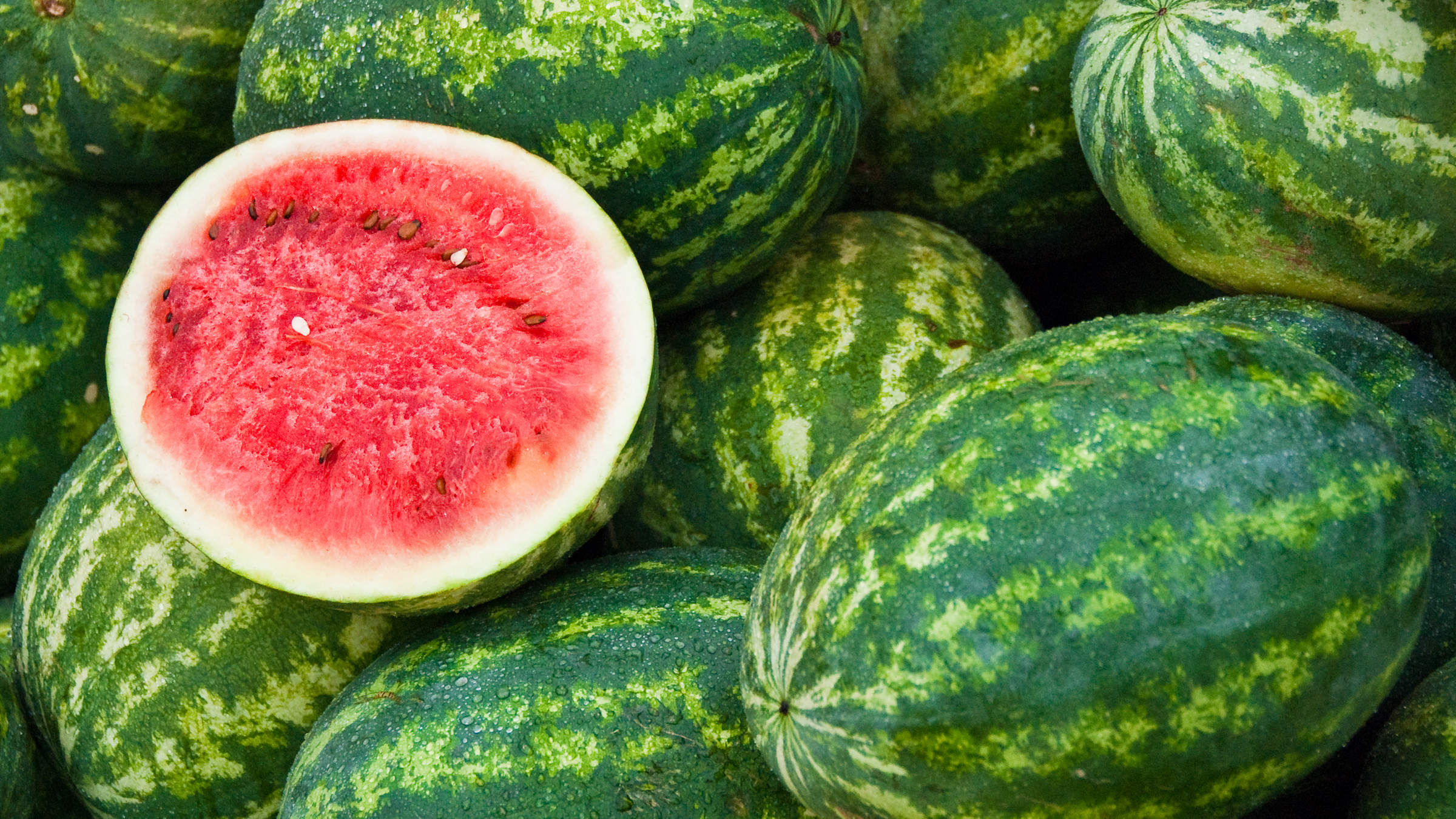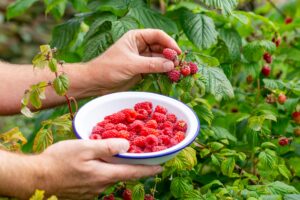How to Grow and Care for Watermelon: A Complete Guide
Growing watermelons can be incredibly rewarding, giving you sweet, juicy fruits perfect for summer enjoyment. Whether you have a spacious garden, limited outdoor space, or just a sunny balcony with room for pots, watermelons can thrive with proper care. This guide will walk you through everything you need to know about growing watermelons in various settings, from seed selection to harvest.
Choosing the Right Watermelon Variety
The first step to successful watermelon growing is selecting the right variety for your space and climate. The US market offers numerous options ranging from classic large varieties to compact cultivars ideal for smaller spaces.
Popular Watermelon Varieties for US Gardens
- Sugar Baby: A compact variety (6-10 pounds) perfect for smaller spaces and containers
- Crimson Sweet: Traditional large watermelon (15-25 pounds) with excellent disease resistance
- Charleston Gray: Heat-tolerant variety ideal for southern states (20-35 pounds)
- Moon and Stars: Heirloom variety with distinctive spotted rind (10-40 pounds)
- Bush Sugar Baby: Compact bush-type plant perfect for containers and small gardens
According to the USDA Plant Hardiness Zone Map, watermelons grow best in zones 3-11, but require different care approaches depending on your specific climate.
When and Where to Plant Watermelons
Watermelons need warm soil and plenty of growing time to develop their sweet flavor and reach full size.
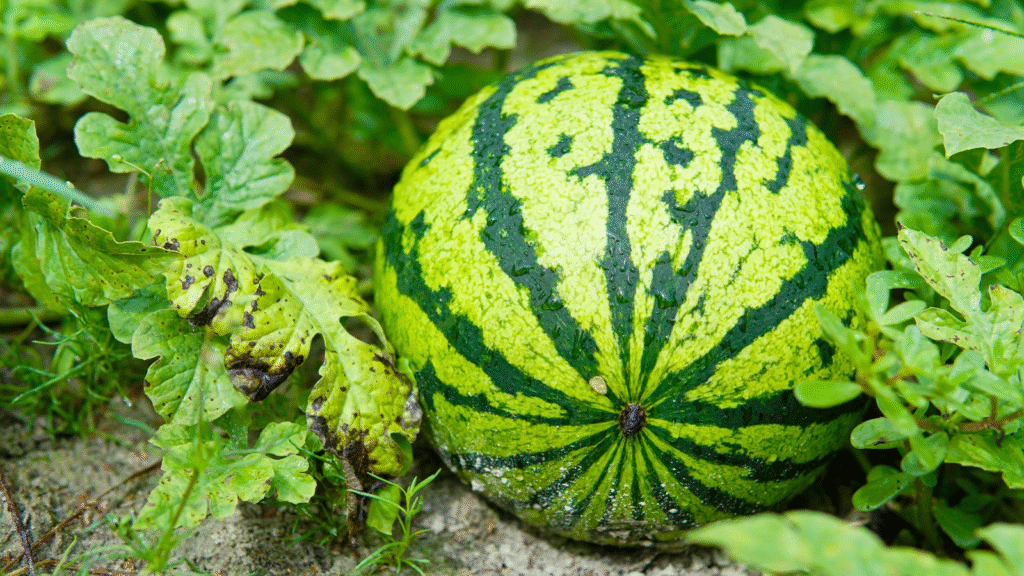
Outdoor Planting Timeline
| Planting Zone | When to Start Seeds Indoors | When to Transplant/Direct Sow | Expected Harvest Time |
|---|---|---|---|
| Zones 3-4 | 4-6 weeks before last frost | 2 weeks after last frost | 80-100 days after planting |
| Zones 5-6 | 3-4 weeks before last frost | 1-2 weeks after last frost | 75-95 days after planting |
| Zones 7-8 | 2-3 weeks before last frost | At or just after last frost | 70-90 days after planting |
| Zones 9-11 | Not typically needed | When soil temp reaches 70°F | 65-85 days after planting |
Choosing the Perfect Spot
You’ll need to provide your watermelons with:
- Full sun (at least 8 hours daily)
- Well-draining soil
- Protection from strong winds
- Space for vines to spread (6-10 feet in all directions for standard varieties)
Starting Watermelons from Seed
Whether you’re growing in a garden or containers, starting watermelons from seed is straightforward if you follow these steps.
Direct Sowing in the Garden
- Wait until soil temperatures reach at least 70°F (21°C)
- Prepare soil by incorporating 2-3 inches of compost
- Create mounds 6-8 inches tall and 12-24 inches wide
- Plant 4-6 seeds 1 inch deep in each mound
- Space mounds 4-6 feet apart (rows 6-10 feet apart for standard varieties)
- Once seedlings develop 2-3 true leaves, thin to the strongest 2-3 plants per mound
Starting Seeds Indoors
- Use biodegradable pots to minimize root disturbance during transplanting
- Fill with seed-starting mix
- Plant 2 seeds per pot, 1/2 inch deep
- Maintain soil temperature at 80-85°F (27-29°C) for optimal germination
- Provide 14-16 hours of light daily once sprouted
- Harden off seedlings before transplanting by gradually exposing them to outdoor conditions
Growing Watermelons in Containers
Yes, you can grow watermelons in containers! While you’ll want to choose smaller varieties, container growing is perfect for patios, balconies, and small yards.
Container Growing Requirements:
- Select bush-type or compact varieties (Sugar Baby, Bush Sugar Baby)
- Use a container at least 18-24 inches deep and 24-36 inches wide
- Ensure excellent drainage with multiple drainage holes
- Fill with high-quality potting mix enriched with compost
- Consider a trellis system to support vertical growth
- Place in a location receiving 8+ hours of direct sunlight
Remember that container watermelons will need more frequent watering and fertilization than garden-grown plants.
Watermelon Plant Care
Proper care throughout the growing season will help ensure a successful harvest of sweet, juicy watermelons.
Watering Requirements
Watermelons need consistent moisture, especially during flowering and fruit development:
- Water deeply once or twice weekly, providing 1-2 inches of water
- Keep soil evenly moist but not waterlogged
- Reduce watering when fruits begin to ripen (last 2 weeks before harvest)
- Use drip irrigation or soaker hoses to keep foliage dry and prevent disease
Fertilizing Your Watermelon Plants
Watermelons are heavy feeders that benefit from proper nutrition:
- Before planting, incorporate compost and balanced fertilizer into the soil
- Apply a nitrogen-rich fertilizer when vines begin to run
- Switch to a phosphorus and potassium-rich fertilizer when flowering begins
- Side-dress with compost tea or balanced organic fertilizer monthly
The National Center for Home Food Preservation, part of the USDA, offers excellent resources on growing and preserving watermelons and other garden produce. You can access their information at nchfp.uga.edu.
Supporting Watermelon Growth
As your watermelons develop, you’ll need to:
- Mulch around plants with straw or black plastic to suppress weeds and maintain soil moisture
- Prune secondary vines if needed to focus plant energy on main vine fruits
- Place ripening melons on cardboard or straw to prevent rot and pest damage
- Consider using row covers early in the season to protect from pests
Common Watermelon Pests and Diseases
Prevention is key when it comes to keeping your watermelon plants healthy.
Common Pests
- Cucumber beetles: Yellow and black striped beetles that can spread bacterial wilt
- Aphids: Tiny insects that suck plant juices and can transmit viruses
- Spider mites: Microscopic pests that cause stippling on leaves
- Squash vine borers: Larvae that tunnel into vines, causing wilting
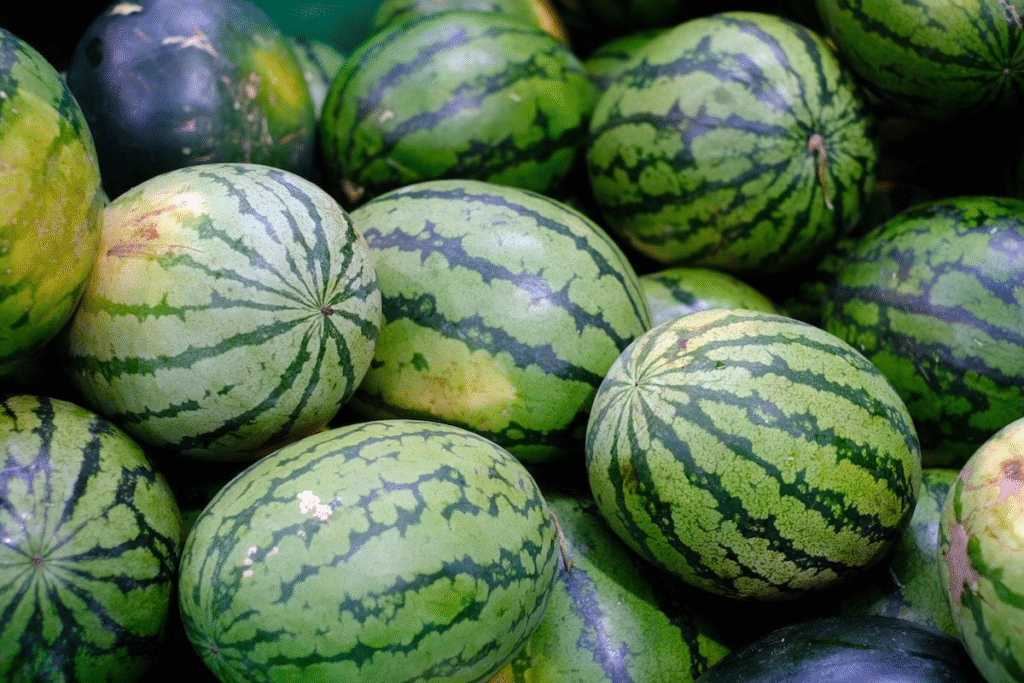
Disease Prevention
- Plant resistant varieties when possible
- Practice crop rotation (don’t plant watermelons where cucurbits grew in the past 3 years)
- Provide adequate spacing for air circulation
- Water at soil level rather than wetting foliage
- Remove and destroy diseased plants immediately
The USDA Agricultural Research Service provides excellent resources on identifying and managing watermelon diseases. Find more information at ars.usda.gov.
Harvesting Your Watermelons
Knowing when to harvest is crucial for enjoying the sweetest, most flavorful watermelons.
Signs Your Watermelon Is Ready
Look for these indicators that your watermelon is ripe:
- The curly tendril nearest to the fruit stem is brown and dry
- The spot where the melon rests on the ground turns from white to cream or yellow
- The rind loses its glossy appearance and becomes dull
- The melon produces a deep, hollow sound when thumped lightly
- The melon has reached the expected size for its variety
Harvesting Technique
- Use sharp pruning shears or a knife to cut the stem, leaving 1-2 inches attached
- Harvest in the morning when temperatures are cooler
- Handle fruits carefully to prevent bruising
- Store at room temperature for up to a week or refrigerate cut melons
Saving Seeds for Next Season
If you’re growing heirloom or open-pollinated varieties (not hybrids), you can save seeds for future planting:
- Select seeds from your best-performing, most flavorful watermelons
- Rinse seeds thoroughly and remove all pulp
- Dry completely on paper towels for 1-2 weeks
- Store in a cool, dry place in paper envelopes
- Properly stored watermelon seeds remain viable for 4-5 years
Troubleshooting Common Watermelon Growing Problems
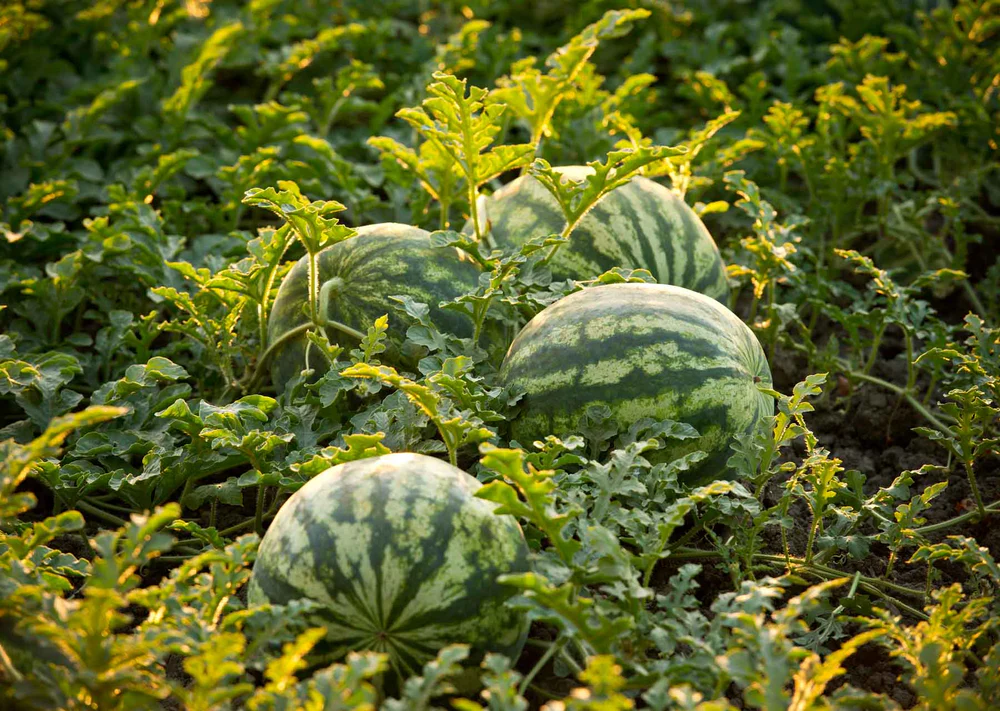
Problem: Small Fruits That Don’t Develop
Possible causes:
- Insufficient pollination
- Nutrient deficiencies
- Inconsistent watering
Solutions:
- Hand-pollinate flowers in early morning
- Apply balanced fertilizer
- Maintain consistent soil moisture
Problem: Split Fruits
Possible causes:
- Sudden increase in water uptake
- Temperature fluctuations
Solutions:
- Water consistently
- Mulch to regulate soil temperature and moisture
Problem: Bland or Poor Flavor
Possible causes:
- Harvested too early
- Inconsistent watering
- Poor soil fertility
- Insufficient sunlight
Solutions:
- Wait for proper ripeness indicators
- Water deeply but less frequently
- Apply compost tea during fruit development
- Ensure plants receive full sun
Conclusion
Growing watermelons requires patience and attentiveness, but the reward is worth it—juicy, sweet fruits perfect for summer enjoyment. Whether you’re growing in a spacious garden or in containers on your patio, following these guidelines will help you achieve watermelon-growing success. Remember that local conditions vary, so don’t hesitate to consult with your county extension office for regionally-specific advice.
With proper planning, care, and attention to your watermelons’ needs, you’ll be enjoying homegrown melons at your next summer gathering!
